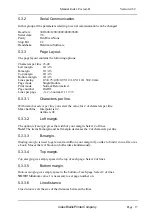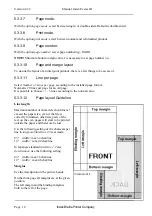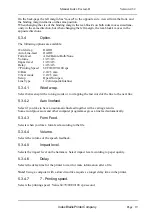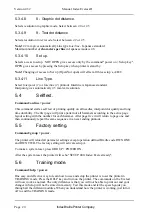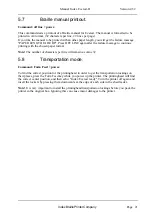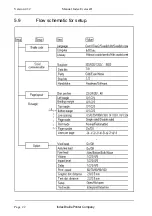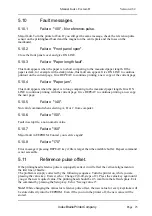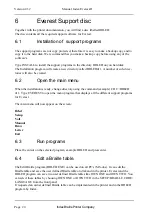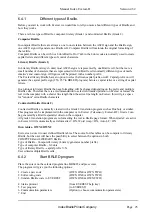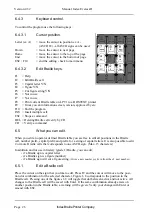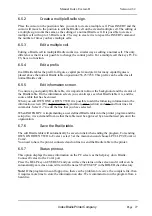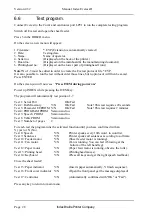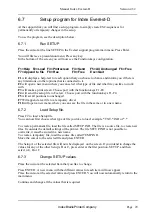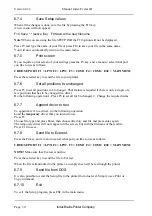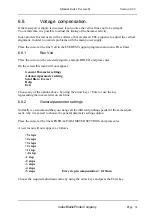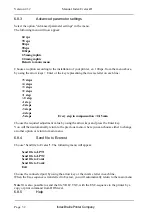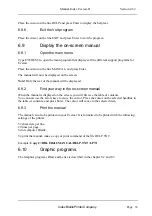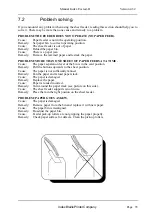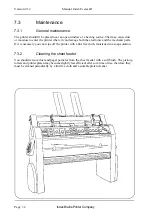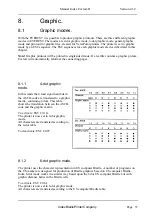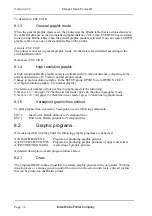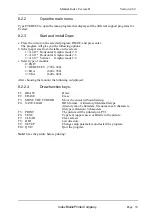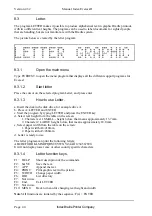
Manual Index Everest-D
Index Braille Printer Company
Page 25
Version 4.32
6.4.1
Different types of Braille.
Before you start to work with Everest we would like to tell you more about different types of Braille and
how they works.
There are three types of Braille, computer, literary (Grade 1) and contracted Braille (Grade 2).
Computer Braille.
In computer Braille there are always a one to one relation between the ASCII sign and the Braille sign,
one ASCII sign will generate one Braille cell. Computer Braille will maintain the original formatting of
the textfile.
Computer Braille can be with 6 or 8 dots Braille. Dot 7&8 in the 8 dots code are normally used to create
capital letters and different types of control characters.
Literary Braille (Grade 1)
In Literary Braille (always 6 dots) most ASCII-sign are represented by one Braille cell, but there are a
small number of characters that are represented with 2-4 Braille cells normally different types of math-
ematics's and control sign. All figures will be printed with a number prefix.
The Everest literary Braille have an option to select between capital prefix on/off. Capital prefix on will
generate the capital prefix sign (256, 257 in BRLED program) before a capital letter or a string of capital
letters.
In a printout in literary Braille the page formatting will be changed depending on the prefix and multiple
Braille cells. Therefore there is a recommendation to select reformatted printout on Everest or format the
text in the computer with a shorter line length than the active line length on Everest, this will give space
for "random" extra Braille characters.
Contracted Braille (Grade 2)
Contracted Braille are normally created with a Grade 2 translation program such as Duxbury or similar.
This program can be implemented in the computer or in Everest (Telesensory Everest-DT). Grade 2 can
be generated by a Braille specialist direct on the computer.
All grade 2 translation program are re-formatting the text to Braille page format. When Grade 2 are active
in Everest it will automatically set reformatted = ON, Word wrap = ON, Auto LF = ON.
Own tables - OWN1/OWN2
Everest can store two user defined Braille tables. The source for this tables can be computer or literary
Braille, but the user will have the possibility to select between the options in both
COMPUTER and LITERARY Braille.
Type of Braille - Computer/Literary (Literary generates number prefix.)
Type of computer Braille - 6/8 dots
Type of literary Braille - capital prefix Y/N
User edited multiple Braille cells.
6.4.2
Start BRLED program
Place the cursor on the selected program line BRLED, and press enter.
The program will give you the following options:
1. Create a new code
(OWN ONE or OWN TWO)
2. Edit existing code
(OWN ONE or OWN TWO)
3. Send an Braille code to EVEREST
(OWN ONE & OWN TWO)
4. Status printout
(from EVEREST help key)
5. Test program
(to EVEREST)
6. Communication parameters
(Option to choose communication parameters.)
7. End







